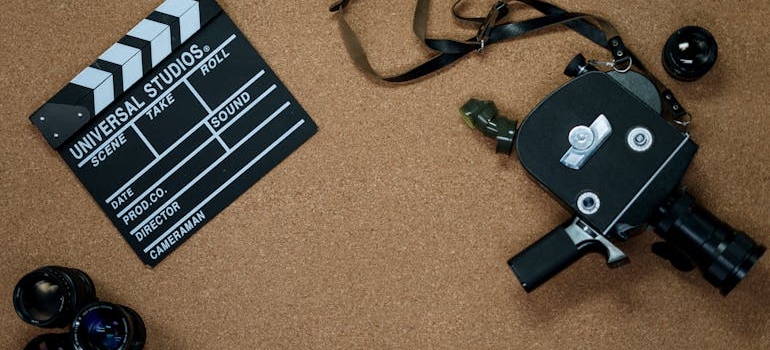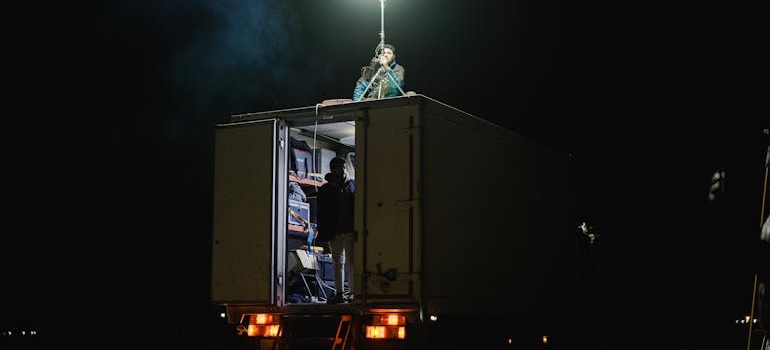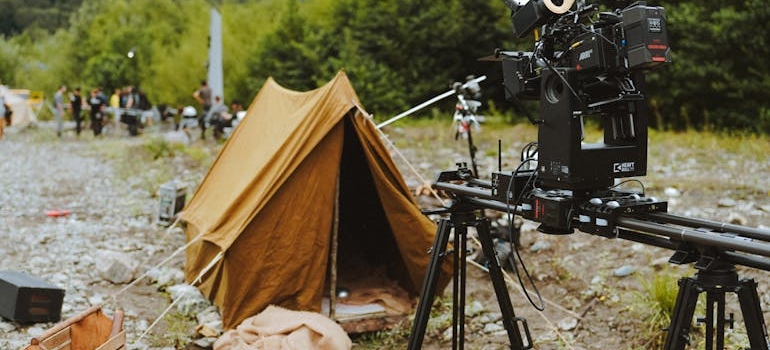
Tips for Relocating Movie Equipment
Get an Instant Online Quote
"*" indicates required fields
Relocating movie equipment is never a simple task. Cameras, lighting rigs, sound systems, and fragile props often cost thousands of dollars and require extra care during transport. A poorly planned move can cause damage, delays, and increased costs for production teams. To avoid these setbacks, professionals use specialized strategies that protect equipment while ensuring smooth transitions between locations. So, let’s check practical, time-tested tips by commercial movers in Atlanta GA to make the process efficient and secure.
Planning Your Movie Equipment Relocation
The first step in moving movie equipment is creating a detailed plan. Each piece of equipment should be listed, assessed for fragility, and assigned a protective method of packing. Professionals often use checklists to avoid leaving behind essential cables, tripods, or lenses. Clear labeling also makes it easier to organize and retrieve items at the new location. Without proper planning, a single missing or damaged piece of gear can stall an entire film schedule.
Choosing the right transportation is equally critical. Not all vehicles are suitable for movie equipment relocation, especially when handling large lighting rigs or delicate sound systems. Many crews rely on trucks designed with padded interiors and shock-absorbent flooring. Smaller productions may choose vans, but it’s essential to secure equipment to prevent shifting during transit. Selecting a reliable moving company familiar with film industry needs can save both money and stress.

Packing and Securing Your Gear
When relocating movie equipment, professional packing techniques are key. Cameras and lenses should be stored in padded, hard-shell cases designed for impact protection. Lighting kits need foam inserts to prevent bulbs from shattering, while sound equipment benefits from waterproof covers that shield against moisture. For bulky items, custom crates or flight cases with reinforced edges are recommended. The investment in protective packaging pays off by preventing costly replacements.
A smart way to streamline the process is to assign responsibilities to specific team members. Someone should manage cables, another handle cameras, while another takes care of sound gear. This division ensures accountability and reduces the chance of overlooking important items. Having a designated supervisor to check the inventory before departure adds an extra layer of security. It’s far easier to prevent mistakes in packing than to replace missing equipment mid-shoot. However, the best solution is to hire pros. For example, using the packing services Marietta companies provide is half the work done.
Transportation and Logistics for Moving Movie Equipment
Transportation logistics often decide how smooth the move will be. Crew members should oversee loading to guarantee fragile items are not stacked incorrectly or placed under heavy gear. Communication between drivers and production managers is vital to stay updated on arrival times and potential delays. With tight shooting schedules, reliability is everything.
Insurance coverage should never be overlooked. Even the best planning cannot eliminate every risk associated with relocating movie equipment. Policies that cover transit damage or theft are crucial, especially for international shoots. Before moving day, production managers should verify that all insurance paperwork is up-to-date and includes every high-value item. This safeguard ensures peace of mind and financial protection if unexpected problems occur.
On-Site Setup and Reorganization
Once at the destination, the reorganization phase begins. Unpacking should follow the same systematic checklist used for packing, making sure each item is inspected for damage before use. Setting up movie equipment quickly and efficiently is possible only if the unpacking process is structured. Clear labeling and proper packing from the start drastically shorten setup times. By doing so, production teams stay on schedule and avoid unnecessary downtime.
Maintaining cleanliness during reorganization is just as important. Dust, moisture, and accidental spills can compromise sensitive electronics. Crews should prepare the site by ensuring safe, dry areas are available for unboxing. Equipment must be placed on stable surfaces to prevent tipping or accidental drops. These extra precautions may take minutes, but save hours of troubleshooting later.

Essential Tips for Successful Movie Equipment Relocation
When moving movie equipment, preparation and consistency matter most. Crews who use standardized procedures for packing, labeling, and loading experience fewer setbacks. It’s helpful to train all staff in safe handling practices to prevent accidental mishandling. Production leaders should also schedule extra time in case of unexpected delays, ensuring the filming schedule remains realistic.
Here are a few must-follow practices:
- Create a detailed inventory checklist before and after the move
- Use protective cases, crates, or covers for every fragile item
- Assign packing responsibilities to specific crew members
- Hire movers with experience in relocating movie equipment
- Confirm insurance coverage for all high-value gear
Documenting the entire process adds another layer of safety. You can use moving apps that facilitate the documentation process.. Photos of equipment before loading and after arrival provide proof if insurance claims are needed. A digital log that includes serial numbers and condition reports makes it easier to track items across multiple locations. This habit not only protects against loss but also increases accountability within the team.
Avoiding Common Mistakes During Relocation
One of the most frequent mistakes in movie equipment relocation is rushing. Tight schedules tempt teams to cut corners, but skipping protective measures usually leads to damage. Another error is improper stacking, where lighter cases are placed under heavy ones, causing unnecessary stress on delicate gear. Crews must resist the urge to overpack vehicles to save trips, as cramped conditions increase risks of shifting and collisions.
Communication breakdowns are another common issue. When multiple crew members are involved, assumptions about who packed what can lead to confusion. To avoid this, teams should designate a single coordinator to oversee the entire move. Using shared digital tools, such as spreadsheets or apps, keeps everyone updated on progress. A culture of open communication ensures that no item is left behind or damaged.
Long-Term Strategies for Relocating Movie Equipment
Productions that frequently move benefit from long-term investment in professional-grade cases and storage systems. Custom solutions may seem costly upfront, but pay off by extending equipment lifespan. Regular maintenance also plays a role in safe relocation. Items that are cleaned, serviced, and properly stored between shoots are far less likely to suffer issues during transit.
Training sessions for new crew members are equally important. By teaching handling and packing standards early, production companies build consistency into their workflow. This approach reduces reliance on individual memory and ensures safe practices even as teams change. With proper training and investment, relocating movie equipment becomes a predictable, efficient process instead of a stressful challenge.

Final Thoughts on Relocating Movie Equipment
Relocating movie equipment requires planning, precision, and professional handling at every step. From packing fragile cameras to securing transportation and reorganizing on-site, each detail impacts the success of a production. Choosing the right Georgia movers, verifying insurance, and following structured checklists prevent costly mistakes. For teams committed to safety and efficiency, moving movie equipment doesn’t have to be overwhelming. With the right approach, productions can stay on schedule, protect their investment, and deliver flawless results.